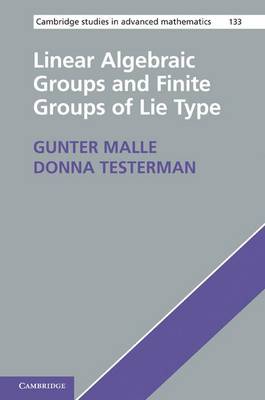Cambridge Studies in Advanced Mathematics
2 total works
Linear Algebraic Groups and Finite Groups of Lie Type
by Gunter Malle and Donna Testerman
Published 8 September 2011
Originating from a summer school taught by the authors, this concise treatment includes many of the main results in the area. An introductory chapter describes the fundamental results on linear algebraic groups, culminating in the classification of semisimple groups. The second chapter introduces more specialized topics in the subgroup structure of semisimple groups and describes the classification of the maximal subgroups of the simple algebraic groups. The authors then systematically develop the subgroup structure of finite groups of Lie type as a consequence of the structural results on algebraic groups. This approach will help students to understand the relationship between these two classes of groups. The book covers many topics that are central to the subject, but missing from existing textbooks. The authors provide numerous instructive exercises and examples for those who are learning the subject as well as more advanced topics for research students working in related areas.
The Character Theory of Finite Groups of Lie Type
by Meinolf Geck and Gunter Malle
Published 19 February 2020
Through the fundamental work of Deligne and Lusztig in the 1970s, further developed mainly by Lusztig, the character theory of reductive groups over finite fields has grown into a rich and vast area of mathematics. It incorporates tools and methods from algebraic geometry, topology, combinatorics and computer algebra, and has since evolved substantially. With this book, the authors meet the need for a contemporary treatment, complementing in core areas the well-established books of Carter and Digne-Michel. Focusing on applications in finite group theory, the authors gather previously scattered results and allow the reader to get to grips with the large body of literature available on the subject, covering topics such as regular embeddings, the Jordan decomposition of characters, d-Harish-Chandra theory and Lusztig induction for unipotent characters. Requiring only a modest background in algebraic geometry, this useful reference is suitable for beginning graduate students as well as researchers.

